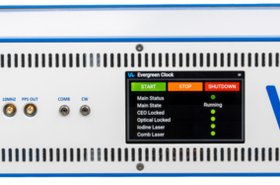Specifications of Nvidia’s upcoming AI GPUs, codenamed Blackwell, have been unveiled by Dell’s CEO during the company’s most recent earnings call.
Answering a question about what he was excited about in the coming year, Dell CEO Jeff Clarke said that after a year of what he called “the H100 show,” the company was “excited about what happens at the B100 and the B200” with regards to performance improvement.
He then went on to tell analysts on the call that the B100s don’t need direct liquid cooling to get to the energy density of 1kW per GPU, although he said that would happen “next year with the B200.”
Nvidia’s H100 GPUs have a thermal design point (TDP) of 700W and are manufactured on a custom version of TSMC’s 4N process, with 80 billion transistors and 80GB of HBM3, enabling 3.5TBps of memory bandwidth.
It provides up to 30 teraflops of peak standard IEEE FP64 performance, 60 teraflops of peak FP64 tensor core performance, and 60 teraflops of peak FP32 performance.
Nvidia has not released any specification details relating to its Blackwell GPUs, with that information expected to be divulged at the company’s GTC conference later this month. The Blackwell chips have an anticipated release date of the latter half of 2024, after the company’s H200 GPUs have come to market.
The H200 GPUs feature 141GB of HBM3e and a 4.8TBps memory bandwidth, but are otherwise identical to the H100s and will start shipping in the second quarter of 2024.
In February 2024, Nvidia posted revenues of $22.10 billion, a 256 percent increase over the same quarter last year, with data center-specific revenues jumping 409 percent to $18.4bn.
However, on an earnings call after the results had been released, Nvidia CFO Colette Kress warned that the company’s latest high-end GPUs were likely to remain in short supply.
“We are delighted that the supply of Hopper architecture products is improving,” she said. “Demand for Hopper remains very strong. We can expect our next generation products to be supply constrained as demand far exceeds supply.”
Two days later, Nvidia passed $2 trillion in market capitalization, becoming the third company ever - behind Apple and Microsoft - to pass that financial milestone.







